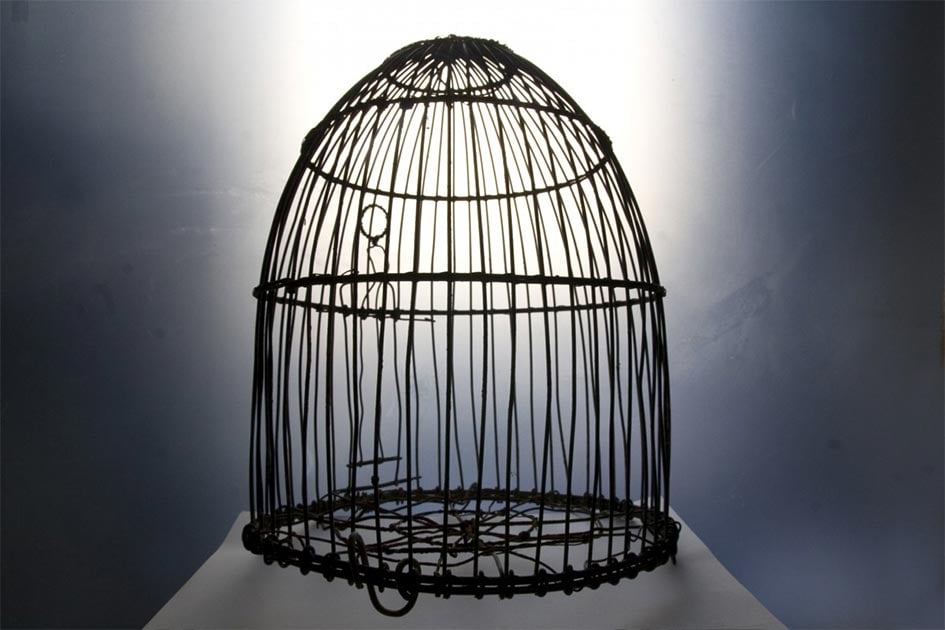Sultans Raised in ‘Cages’: Overprotection Turned to Madness
In the world of nobility, aristocracy, and famous ruling dynasties, the issue of succession was always a problem. When several sons seek the prospect of a vacant throne, the greed and desire can truly get the best of them. Not even the eldest son could aspire safely to acquire the throne. Fathers were blinded, sons poisoned, assassins hired to eliminate the rivals - the world of a noble son was rife with dangers, intrigues, plotting, and uncertainty. Our latest story takes us to the days of the Ottoman Empire, where Sultans ruled and rose to great heights and enormous power and wealth.
But their successors found an intriguing way to curb the rivalry of succeeding heirs. They placed the possible successors in elaborate and rich palace wings, where they were confined and under constant guard. Over time, these became known as the “cages,” and it is those confines that we will talk about today.
The Survival of the Dynasty – The Story Behind the Sultans Raised in “Cages”
All throughout Europe during the period, succession to the throne was a troubling issue for almost every royal court. The royal families would often resort to complex plots and measures in order to direct the line of succession in their own favor. Kings who had several sons would almost certainly know that trouble would brew among them.
All over the courts of Europe we can read of such examples, where brothers would die suddenly and of unknown causes and the throne would pass to younger siblings. Such was the brutal and loveless life of nobility. And the Ottoman Empire was no different.
- Imperial Harem of the Ottoman Empire Served the Sultan in More Ways Than One
- From Slave to Sultan: Baibars I - The Slave Warrior Who Fought His Way to the Top
At its height the Ottoman Empire covered a large part of southern Europe, North Africa, and West Asia, and it had many vassal states. This in turn signified power and wealth beyond measure, all of which were enjoyed by the Sultan. A Sultan was the Ottoman Emperor and he often had a multitude of sons. This in turn resulted in numerous conflicts between the Sultan’s offspring.
Early history of the Ottoman Empire is filled with various examples of succession “wars” and conflicts. Some power hungry brothers would go to extreme lengths to secure the throne for themselves - they would often outright kill all of their brothers in cold blood. While this did secure their throne, it also undermined the royal dynasty and bloodline.
With males of the family murdered - often a dozen of them at once - the bloodline was under a huge threat of going extinct. To counter this, the Ottomans came to a genuinely unique idea at the time. They developed a form of royal house arrest.
Isolation wings were made for possible successors to the throne in order to prevent them from plotting to depose their siblings and to protect them as well - from their siblings. These wings were part of the courtly palace, or the Imperial household, and were located inside the Imperial harem.

Outside view of the apartments of the crown prince, Topkapi Palace, Istanbul, as seen from the Concubine's courtyard. (Public Domain)
What is a harem ? In the Ottoman Empire, the harem was a special wing of the palace, mainly reserved for women - precisely the Sultan’s concubines. Sultans had several wives and even more concubines, and a harem was one of his chief displays of power. The word harem itself is connected to the Arabic term ‘haram’, meaning something that is “forbidden.”
The harem was guarded by eunuchs. These were Nilotic black slaves who were castrated, and as such were seen as adequate guards for the females. Interestingly enough, the chief eunuch would always rise to a place of prominence in the empire.
Luxury Between Four Walls
One important aspect of the Ottoman rule of succession must be mentioned in order to fully understand the story of the “cage.” Contrary to the common European medieval practice where the line of succession would go from father to son, and then to his son, in the Ottoman Empire it was different. The throne would go from father to son, but the next in line was the first younger brother. And that is the root of the Ottoman succession problem.

A Turkish bath provided for a harem with women and children. (Public Domain)
When you have, let’s say five brothers (and with the multiple wives of the Sultan it was often much more than that) and all of these brothers covet the wealth and the power of the throne, you openly risk civil war, constant plotting, and assassinations. Prior to the 1600’s it was nothing out of the ordinary for an heir to the throne to kill every single brother - even the infants. And this was often done en-masse - all at once. Yes, such a brutal heir would eliminate any possible challenge to this claim, but it also put the royal line at risk.
The practice of fratricide, i.e. the murder of brothers, was present in the early stages of the Ottoman Empire, but with the rise of Sultan Mehmed II the Conqueror, it was actually made law, and was a norm. It lasted until roughly 1603, when the kafes, or cage system was introduced. Mehmed the II did it to secure the future of the empire, as constant succession wars and inner conflicts among brothers would only weaken the empire.
During that time, when a Sultan succeeded to the throne, he would imprison all of his brothers. But once he produced a male heir, he would proceed to murder all of the imprisoned brethren. This was notoriously done with a silk cord.
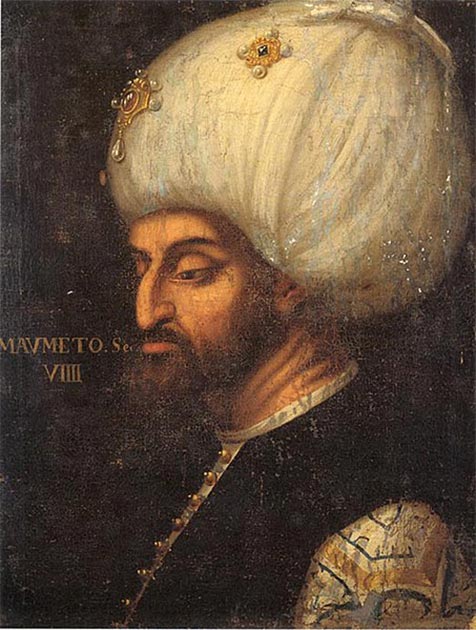
Portrait of Sultan Mehmed II the Conqueror. (Public Domain)
By around the 1600’s the practice was declining as the royal line grew thin. When the Sultan Ahmet I died in 1617, the tradition of fratricide died with him, even though Ahmet’s own father, Mehmed III, killed 19 of his own brothers.
The end of the fratricide tradition happened because Ahmet’s heir was only 13 years old at the time, and in an unprecedented turn of events - for the first time in 14 royal generations - the Imperial Council chose a different heir, altering the traditional line of succession. They chose the late sultan’s brother - the 25 year old Mustafa I, the Saint.
Several sources state that Mustafa I was slightly mad, or had mental issues, and that Ahmet I liked him and took pity, refusing to have him killed. Instead, Mustafa was deposed soon after becoming Sultan, and subsequently became the first of the royal brothers to be confined to the “cage,” or the harem wing of the palace. In the generations that followed the practice became accepted and all of the future sultan’s brothers, nephews, and cousins would be confined to the kafes , usually when reaching puberty.

Hall with a Fountain in the Harem vestibule where princes and consorts waited to enter the Sultans Imperial Hall Topkapi Palace Istanbul. (Reimar /Adobe Stock)
But the kafes system had many shortcomings that were never fully resolved. Before its introduction, all future sultans were taught the way of the rulers. They would be given a province to govern under the care of mentors and would thus learn how to rule and govern a land. This produced several highly capable sultans that would conquer large swaths of Europe and expand the empire. But with the beginning of the cage system, these boys would be confined to a wing of the palace - under house arrest and constant surveillance. This resulted in several incompetent sultans, and even more insane ones.
The Mark of the Cage – Madness of the Sultans
The caged “inmates” - for a lack of a better term - were essentially isolated from the outside world. Their only company was slaves and servants, and sometimes concubines as well. They were usually not allowed to father offspring and were thus only given barren concubines when that was permitted. They had no notion of life outside the kafes, or the affairs of the world or the empire.
- The Puzzling Death of Sultan Saladin: A 12th Century Medical Mystery Solved?
- Topkapi – A Palace of Dreams and Tears from the Ottoman Empire
Many of them reached old age within the kafes and died there. And many more developed serious psychological disorders, sinking into madness and depression. Some committed suicide, while others grew so estranged from contemporary lifestyle that they were incapable of ruling over the empire.
A clear example of this relates to Sultan Murad IV. He was confined to the cage when he was six years old and a few years later he became sultan. He was known for his brutal rule and his banning of alcohol, coffee, and tobacco. He was so fervently devoted to this ban that he would don civilian clothes and patrol the city at night. If he spotted a person consuming these substances, he would behead them on the spot. Sometimes he even wandered the streets at night and simply cut down people for no apparent reason.
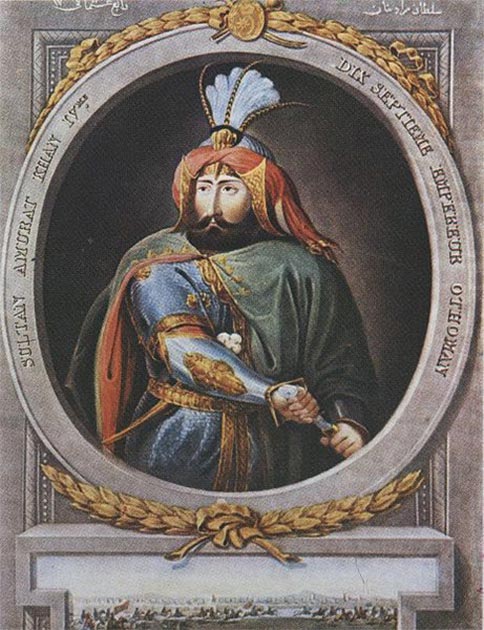
Sultan Murad IV. (Public Domain)
He also sat in a kiosk by the water beside his palace and shot passersby with arrows for sport - seemingly because they approached too close to his palace. Murad IV’s imprisonment certainly left a mark on his character and he died at age 27 from cirrhosis. He had 10 sons.
Another victim of the kafes system was actually the younger brother of Murad IV, known as Ibrahim the Mad. Ibrahim spend most of his life confined to the “cage” and that had serious effects on his mental health. He lived in constant fear for his life, fearing that his brother would murder him.
Although physically weak and prone to headaches, Ibrahim’s early rule was marked with his unchecked physical appetites. He indulged in lust and in decadence, while the empire was ruled by the council. Contemporary accounts describe some of his mental episodes that were mingled with his lustful appetites. He would assemble his concubines, strip them naked and proceed to run between them and neigh like a horse.
Another contemporary source states that Ibrahim the Mad was so lustful that he became aroused by the rear end of a cow. He ordered a cast to be made and sent around the empire, so a woman of a matching rear end could be found for him. A woman was found, in Armenia, and she weighed 150 kilograms (330 lbs.) Ibrahim the Mad was completely in love with her.
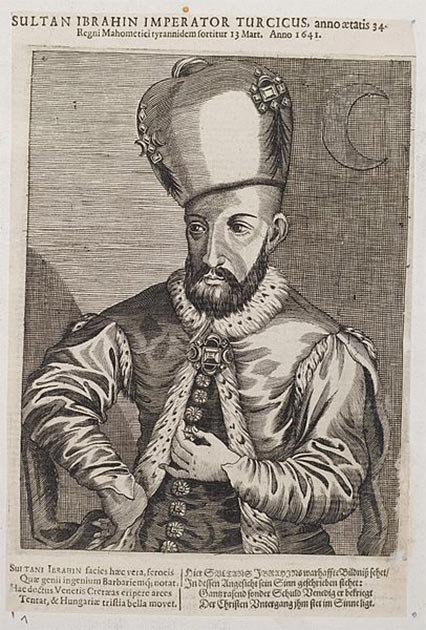
Ibrahim I by Arolsen Klebeband. (Public Domain)
Suleyman II was another example of a frail but not so mad sultan. He was the son of Sultan Ibrahim the Mad and a captive Slavic concubine from Serbia, Katarina. He spent roughly 36 years in the kafes, almost his entire life. Reportedly, once he was released to become the Sultan he said:
“If my death has been commanded, say so…Since my childhood, I have suffered forty years of imprisonment. It is better to die once than to die every day. What terror we endure for a single breath.”
The kafes system survived for a long time after. Even the last Ottoman Sultan, Mehmet VI, who ruled from 1918 to 1922, came out from the kafes. He spent the longest time in it from all the Sultans - an incredible 56 years of confinement. He was marked with a frail and despondent countenance.
- Hurrem Sultan, the Cheerful Rose of Suleiman I and a Powerful Woman of the Ottoman Empire
- In a Forbidden Place: Hidden Lives in a Harem
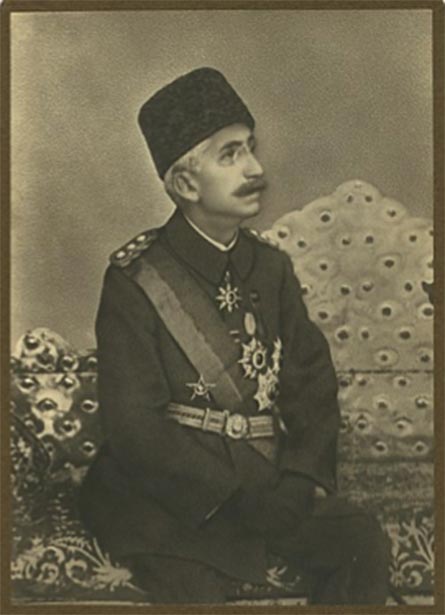
c. 1920 photograph of Sultan Mehmet VI, the last sultan of the Ottoman Empire. Restored by Adam Cuerden. (Public Domain)
The Ottomans did have a strange situation with their lines of succession, more so than any other court. Their harems of wives and concubines meant that they had between 10 and 15 sons on average and sometimes more, and that proved a clear issue with succession. Yes, the kafes was an effective system at preserving the royal line and producing sultans, but it was also quite crude and cruel. Men spent their entire lives, or at least several decades, in confinement to a small palace wing.
They either grew philosophically and artistically, or went mad and suicidal. It just goes to prove that even though these men had access to concubines, comfort, and the arts, they had no further contact with the world outside their “cage,” and that shows us that men cannot be caged as birds - they will always desire freedom and life. Four walls, no matter how lavishly decorated, will become equal to the grey walls of a prison cell given enough time.

Crown Prince apartment with original ceiling in the Topkapi Palace Harem Istanbul, Turkey. (Reimar/Adobe Stock)
The Fate of the Empire
The early history of the Ottomans is without a doubt rife with brutal and unorthodox practices. As equally as they were brutal in war and in the lands they conquered, so were they cruel in their own courts. Their practice of fathering many sons to many wives, and then those sons murdering one another, created a glimpse into a sort of a small micro-community which continually eroded itself. Such is the fate of powerful empires with greedy appetites.
Top Image: Many Ottoman Sultans essentially grew up in ‘cages.’ Source: CC0
References:
Bos, J. 2012. Murad IV of Turkey. Mad Monarchs. [Online] Available at: https://madmonarchs.guusbeltman.nl/madmonarchs/murad4/murad4_bio.htm
Bos, J. 2012. Ibrahim I of Turkey. Mad Monarchs. [Online] Available at: https://madmonarchs.guusbeltman.nl/madmonarchs/ibrahim1/ibrahim1_bio.htm
Gamm, N. 2013. When is a ‘kafes’ not a Cage? Hurriyet Daily News. [Online] Available at: https://www.hurriyetdailynews.com/when-is-a-kafes-not-a-cage-43457
Patowary, K. 2019. The Ottoman Sultans Who Were Raised in Cages. Amusing Planet. [Online] Available at: https://www.amusingplanet.com/2019/09/the-ottoman-sultans-who-were-raised-in.html


















